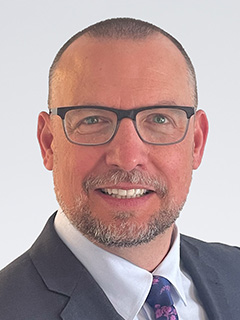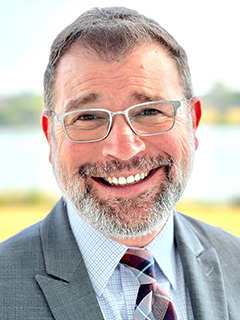Optimizing your government workforce
A guide to enhancing efficiency, effectiveness, and employee experience in federal and state governments

Every governmental institution aims to have a workforce that is efficient, skilled, and motivated. This objective is known as workforce optimization.
But what does workforce optimization mean in a governmental context? How do you achieve it? And how does your agency transform once it’s implemented?
Workforce optimization in the public sector can be defined in various ways, but fundamentally, it involves creating a workforce characterized by efficiency, effectiveness, and improved employee experience.
Key components of an optimized government workforce
1
Efficiency
One approach to improving workforce efficiency includes integrating advanced technology solutions. For instance, an agency might implement an AI-driven customer service platform to handle routine inquiries and relieve human employees from repetitive tasks. This not only expedites service delivery but also allows staff to focus on more complex and high-priority issues, thus optimizing human resources and improving employee experience.
2
Effectiveness
Effectiveness within a government setting means evaluating the results of workforce activities that align with the agency’s strategic objectives. This includes utilizing centralized data and analytics to assess overall and individual performance. By employing such metrics, agencies can improve service delivery, policy implementation, and overall agency performance.
3
Experience
Optimizing the workforce often requires promoting a robust employee culture that acknowledges significant milestones, instills pride in the agency, and enhances a sense of individual contribution. This may involve celebrating civil servants' achievements, providing developmental and career mobility opportunities, as well as emphasizing the importance of each role in fulfilling the agency’s mission.
Workforce optimization and current executive influences
Given the current activities within the government workforce, optimization efforts must also contend with several significant events that have impacted the public landscape:
1. Recategorization of employees1
The federal government has pushed for reclassification of employees, shifting many positions from competitive service into excepted service, leading to changes in job security, promotion pathways, and procedural protections. This reclassification effort aims to increase managerial flexibility but has also drawn criticism for undermining merit principles and reducing personnel stability.
2. Large-scale reductions
To streamline the federal workforce, there have been substantial workforce reductions across various agencies. These reductions are intended to decrease governmental spending, improve efficiency, and shift certain programmatic and budgetary responsibilities to states. However, they also pose challenges such as interruptions in service delivery, loss of institutional knowledge, and increased workloads for remaining staff, which can affect employee morale and performance.
3. Ongoing restructuring
The administration’s ongoing restructuring efforts have led to the creation of new agencies, the elimination of others, and shifting functions across departments. These moves aim to adapt the federal structure to contemporary needs.
4. Market evolution and the KPMG HR transformation approach
As markets continue to evolve, bringing possible challenges and uncertainties to the public workforce landscape, the KPMG multifaceted HR transformation approach helps our clients navigate these complexities by enhancing their workforce strategy and operational efficiency for sustainable success through these times of change.
The future of the government workforce: Four components
Empower agencies with cutting-edge technology, automation, and artificial intelligence to enhance operational efficiency and effectiveness. Modernize the organization and workforce to better serve Americans and prepare for the future of work.
Define and refine agencies’ operating models to ensure the workforce delivers maximum value for Americans. Focus on meeting essential mission demands with excellence and foster a culture of continuous innovation.
Align the workforce strategy with the agencies’ future operating model. Develop strategies to ensure that they have the right employees with the right skills at the right time, supporting the mission and organizational goals efficiently.
Lead agencies through change by championing transparent and effective leadership direction. Support employee needs and experience to cultivate a motivated and engaged workforce.
Workforce optimization in practice
Having a workforce optimization plan helps federal and state government agencies become more efficient and productive, with a well-structured workforce and innovative, engaged teams.
Here are three hypothetical examples demonstrating how government agencies can develop workforce optimization plans that deliver efficiency, effectiveness, and an improved employee experience:
Example 1: Reducing excess administrative layers
Challenge:
A state labor department assessed its workforce structure and identified an excess of administrative layers, leading to inefficiency and high operational costs.
Impact:
The streamlined structure reduced costs, minimized bureaucracy, and accelerated decision-making. The result was a more agile and effective agency, with a workforce better equipped to respond to public needs.
Example 2: Filling talent gaps with GenAI
Challenge:
A federal agency responsible for cybersecurity development faced prolonged hiring processes, delaying its critical initiatives.
Impact:
The HR processes became faster and more effective, allowing the agency to fill positions quickly and focus on strategic tasks. Employee engagement and experience improved as HR teams could focus on meaningful activities.
Example 3: Minimizing financial reporting errors
Challenge:
A state educational agency sought to transform its financial operations to minimize reporting errors and enhance efficiency.
Impact:
The automation reduced errors, streamlined the reporting process, and allowed financial analysts to provide greater business insight. This led to a more innovative, engaged, and effective workforce, delivering high-quality results.
Workforce optimization is crucial for federal and state agencies to achieve efficiency, effectiveness, and positive employee experience. To begin this transformative journey, agencies should first conduct a comprehensive assessment of their workforce to identify opportunities for using advanced technologies such as GenAI. This involves evaluating current technological capabilities, identifying gaps, and understanding the specific needs and challenges of the workforce.
Once readiness is established, agencies can develop a strategic workforce optimization plan. This plan should include redistributing tasks to ensure that employees are engaged in meaningful work that leverages their skills and expertise, while routine and repetitive tasks are automated. By doing so, agencies can enhance productivity and job satisfaction simultaneously.
Moreover, measuring workforce activities through reliable performance metrics is essential. Implementing systems that track and analyze these metrics can provide valuable insights into employee performance, helping to identify areas for improvement and celebrate areas of success.
Equally important is fostering a compelling organizational culture that promotes a sense of pride and ownership among employees. Agencies should focus on creating an environment where achievements are recognized, professional development is encouraged, and employees feel that their contributions are valued and directly linked to the agency’s mission.
In a nutshell, nailing workforce optimization is all about taking a well-rounded approach. Imagine seamlessly blending cutting-edge technology, smart strategic planning, effective performance tracking, and a positive workplace culture. When you get that mix just right, you’ll transform your agency into a dynamic and super-effective powerhouse ready to meet any challenge.
Footnotes
1Source: US Office of Personnel Management, Summary of Reassignment
Build a workforce to support your digital journey
Explore new ways to create a culture that will attract, engage, and retain your digital workforce
Want to receive the latest government insights?
Opt-in today and be the first to receive the latest industry updates from KPMG
Explore more

Transform your government workforce to excel with GenAI
Enhance your future workforce by combining cutting-edge technology with human innovation

Reimagining strategic workforce planning in government
Why AI calls for more holistic and innovative talent decision-making

GenAI is transforming work and the government workforce
Discover how KPMG can help shift from technology-centric to human-experience focus in the GenAI era

5 benefits of skills-based talent strategies in government
Future-proof your workforce with a skills-based talent strategy

Rebuild your workforce to make the most of your agency
Embrace agile workforce models, refine roles, prioritize coaching, and focus on upskilling to boost innovation
Meet our team


